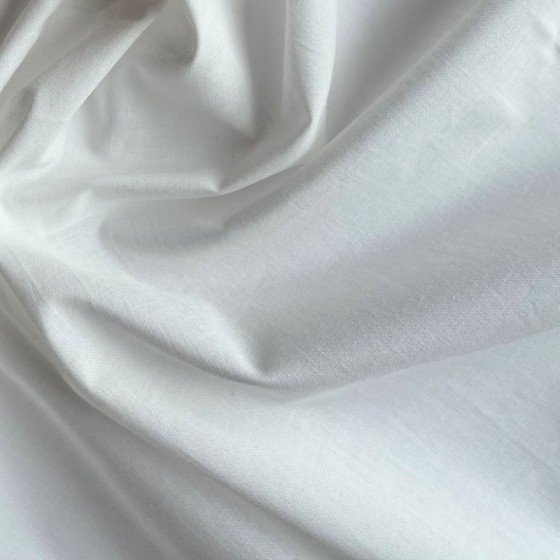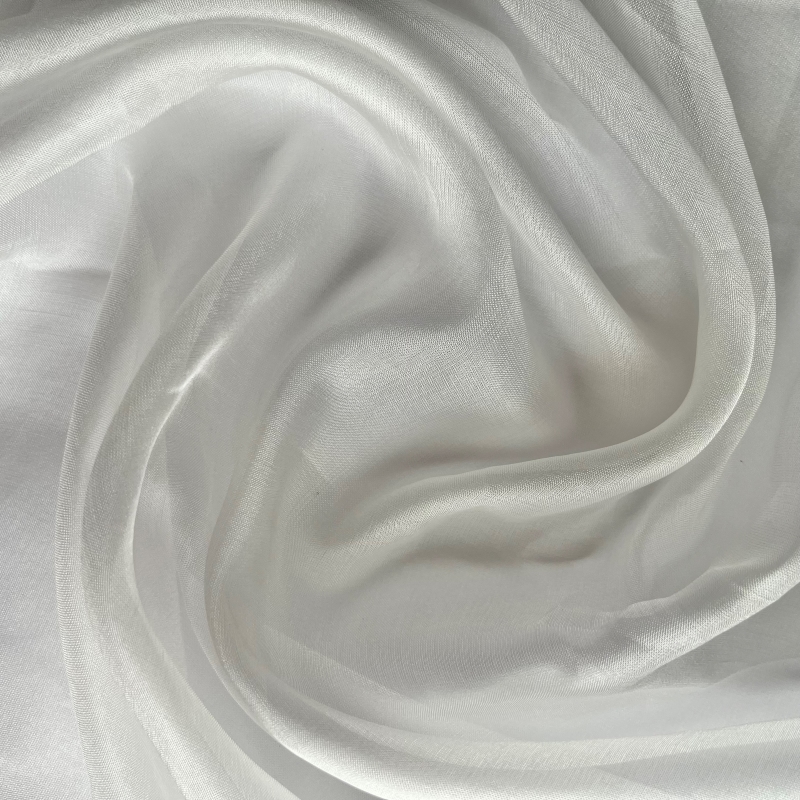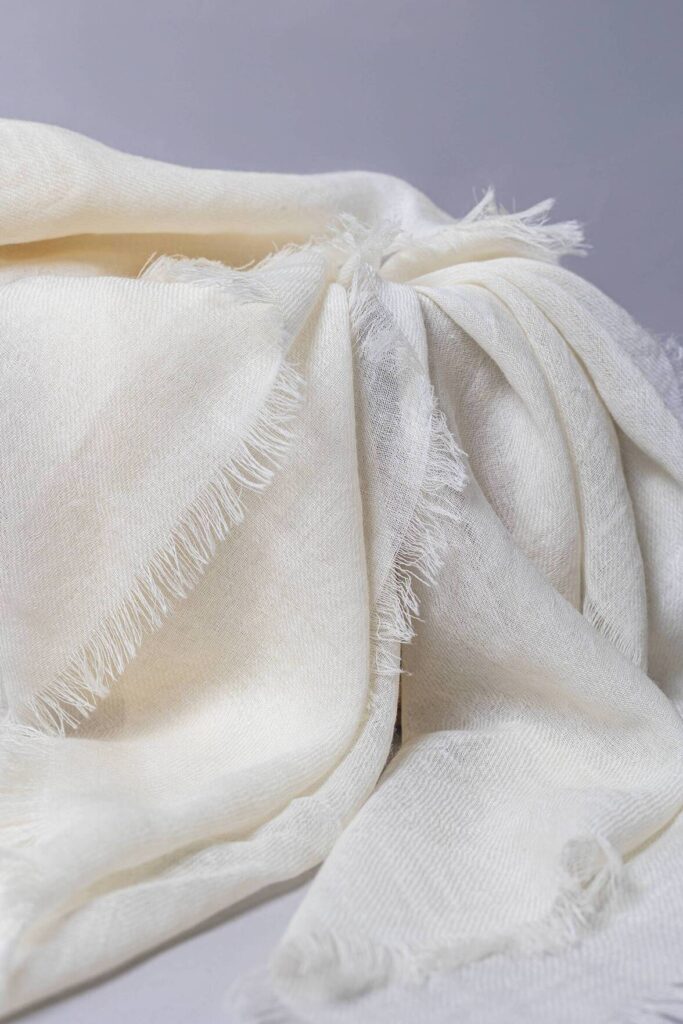Natural fabrics like cotton, linen, silk, and wool have been loved for centuries for their properties. They are renewable materials that come from plants and animals. When cared for properly, they can last for years while keeping their beauty, comfort, and texture.
Plant-based (cellulose) fabrics include cotton, linen, hemp, and bamboo, while animal-based (protein) fabrics include silk, wool, alpaca, and others. Each of these fabrics has unique properties and requires a slightly different care routine.
Since there are many different fabric types, always check your garment’s care label before washing, drying, ironing, or storing to avoid damage.
In this article, you’ll find a detailed guide on how to take care of your natural fabrics—helping you keep your clothes soft, strong, and sustainable for longer use.
Cotton and linen fabrics
Cotton is extracted from the fibers of the cotton plant. Since cotton fabric is highly breathable and absorbent, it is commonly used in any type of climate. With proper care, cotton can remain soft and durable for years.
Linen is an exceptional natural fabric for its strength, quality, and durability. It stands out from other natural fibers because of its breathability, thermoregulation, and natural resistance to bacteria. With proper care, linen becomes softer and more comfortable over time while maintaining its shape.
Washing instructions
Cotton and linen are strong, durable, and temperature-resistant fabrics that are easy to care for. We still recommend the use of machine-washing at temperatures between 30°C and 40°C using natural detergents for environmental purposes.
Drying instructions
You can put the cotton and linen cloths in the dryer for tumble drying, but it is important to check if they are pre-shrunk. Use a low heat setting to minimize shrinkage rather than a high heat setting, as the fabric can shrink.
Ironing instructions
For a neat finish, these fabrics or garments can be ironed while slightly damp at a medium to high temperature, depending on the fabric texture. Ironing helps to bring back the original texture of the fabric.
Discover our cotton and linen fabrics
Silk fabrics
For many years, it was believed that dry cleaning was the only way to properly care for silk, but it can also be washed at home, depending on its specific weave. Since silk comes from a protein fiber, it is soft and delicate, but it is also durable, like other natural fabrics.
Washing instructions
To keep its natural shine, wash it by hand or on the most delicate machine cycle or silk cycle, using water below 30°C and a mild natural or eco-friendly detergent. Avoid soaking silk for too long and wringing the fabric, as it may damage the delicate fibers.
Useful tip: After washing, roll the fabric in a clean towel to press out excess water instead of wringing.
Drying instructions
Silk should be handled gently when drying to maintain its shine and shape. Then air-dry the silk by hanging it in the shade, away from direct sunlight, to protect it from the harmful UV rays. Never ever use a tumble dryer, as high heat can damage the shrink or delicate silk fibers.
Ironing instructions
Silk is a delicate fiber, so it should be ironed carefully to avoid damage. Always iron silk while it is slightly damp or use a steam iron on a low heat setting. If the silk is completely dry, lightly mist it with water before ironing. Turn the fabric inside out to prevent shiny marks, and avoid pressing too hard.
Wool fabrics
The wool fabric keeps you warm in cold weather. Its natural insulating and moisture-wicking properties help maintain a steady body temperature in changing conditions. Merino wool naturally resists the growth of odor-causing bacteria, so you can wear the same Merino wool garment multiple times without washing and without worrying about odor. Your skin stays healthier from any allergies. The clothes stay fresh for longer, even after many washes.
Washing instructions
Wool should never be washed above 30°C to prevent shrinkage—always use a gentle wool cycle. Use natural detergents to protect the fibers, and keep the spin cycle as short as possible. If it’s machine-washable wool, then we would recommend using a spin cycle of 400 rpm or less.
For delicate fine wool, we recommend hand washing with cold water in a wool cycle to prevent the delicate fibers from damage. It helps to prevent shrinkage and keep the fabric’s shape and texture intact.
Important tips: Wool is sensitive to sudden temperature changes, which can damage the fibers. Avoid washing it in hot water followed by a cold rinse. It is a common issue with washing machines, and always keep the temperature no more than 30°C.
Drying instructions
Most wool fabrics are air-dried at room temperature. They should be away from direct sunlight or heat. Do not tumble dry the wool fabric unless the care label specifically states that it is safe to do so.
Ironing instructions
Most wool fabrics do not require ironing, but very fine ones may look better when pressed. Set your iron to the wool setting and avoid ironing the fabric when it is completely dry. It is best to use a pressing cloth between the iron and the garment to protect its natural texture. Always iron it inside out.
General care instructions for natural fabrics
Avoid overloading the washing machine to let the fabric move freely for proper cleaning. Since regular detergents can cause skin irritation and damage the quality of fabrics due to the presence of harsh chemicals, it is recommended to use natural detergents.
To maintain their quality, whites and colored fabrics should be washed separately to prevent color transfer.
Storing these fabrics after washing and drying plays a very crucial role. To store fabrics or garments, keep them in a cool, dry, or dark place to maintain the fabric’s quality. Instead of using plastic bags, use breathable containers or bags to keep your clothes breathable and prevent moisture buildup. Heavy clothes like shirts and sweaters may be better to hang. Before storing your garments, ensure all items are clean.
Do not bleach the fabric, whether it is white, as it can damage the fiber quality and natural color.
Conclusion
Taking care of natural fabrics doesn’t have to be hard. With proper care, you can make your clothes last longer and look great. By following all the steps above, you can protect your clothes and help the environment by reducing waste.
Are you looking for natural fabrics with no MOQ?
At Green Tailor, we are dedicated to supplying natural fabrics and products worldwide with no MOQ. No matter where you are, your order will arrive on time. Our natural fabrics include organic cotton, cotton, linen, silk, wool, and a range of handcrafted fabrics. All sustainable products and fabrics are safe for you and also better for the environment.
For more information, feel free to contact us directly at [email protected].






